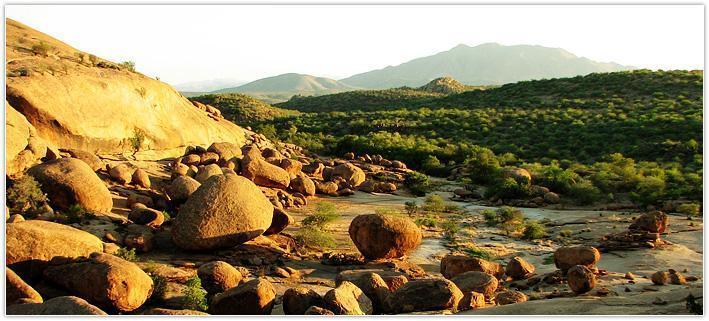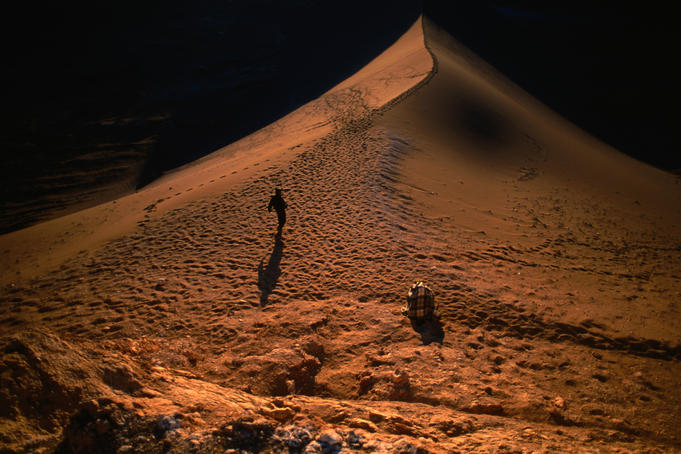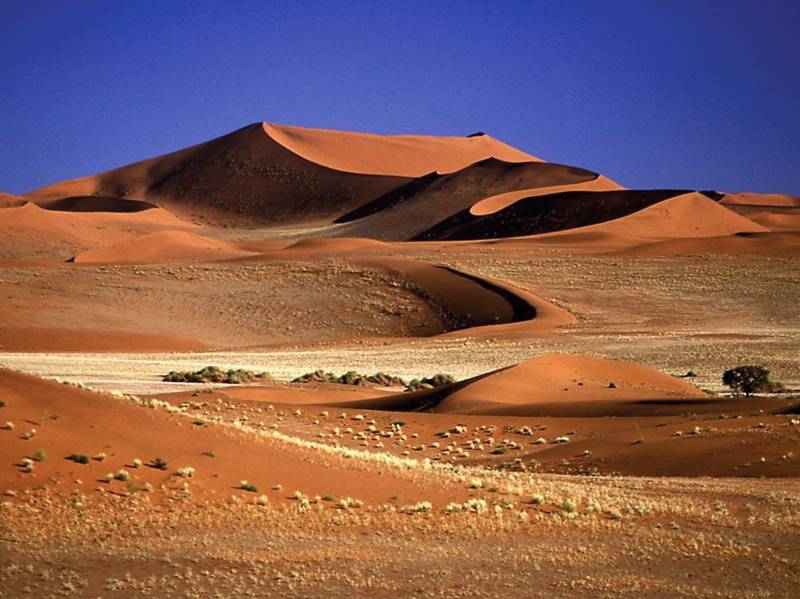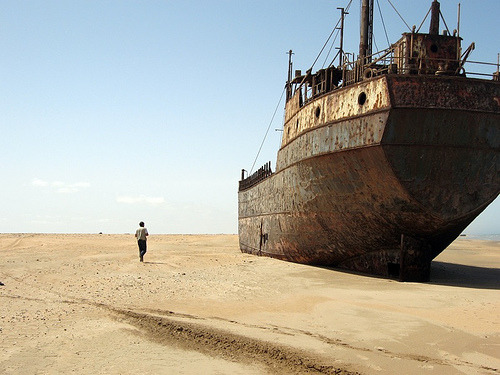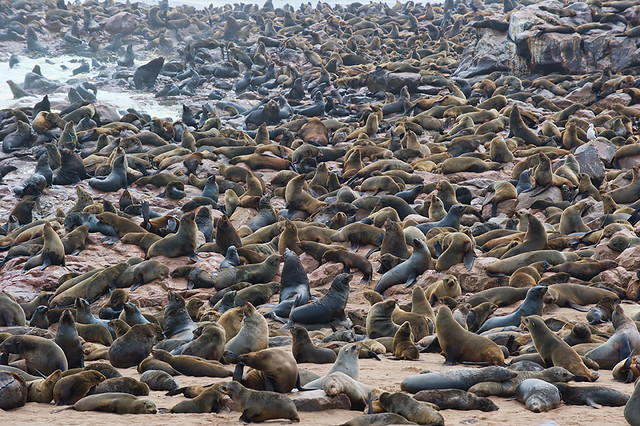
The nearby Erongo massif succeeded in erupting as a true volcano, belching out molten rock and ash for a believed 20 million years, before collapsing, forming today's caldera.
Further north, Namibia's highest mountain, the Brandberg, ascends nearly 8,320 ft
(2,600 m) at its highest peak named Konigstein, meaning "King's Rock" in German, above the desert floor.

The mountain is striped with black stripes made of iron and manganese known as "desert varnish".
The Erongo Mountains are home to hundreds of San rock paintings, simple reminders of Namibia's first inhabitants some 6,000 years ago.
Spitzkoppe
Spitzkoppe is near Swakopmund and is easily reached from the B2 road.
If you are interested in camping at Spitzkoppe or wanting a tour guide to take you to the area, check out Spitzkoppe Campsite.
It's a community operated camp and a member of Nacobta.

